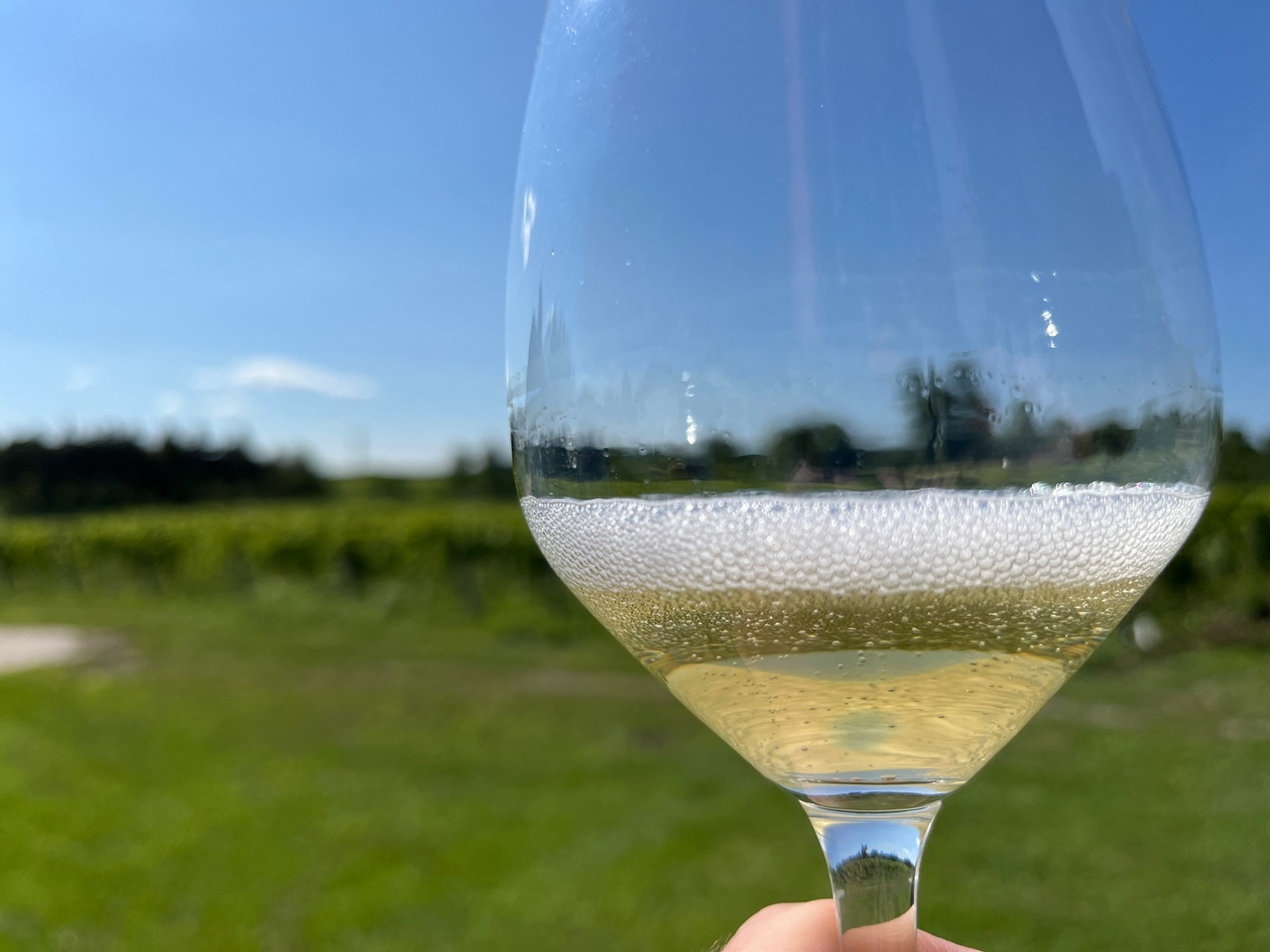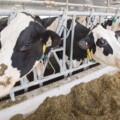It took me a minute to catch Ilya Senchuk’s point about the 2021 Leaning Post “The Fifty” Chardonnay. It was mostly, he explained, in tanks he bought from Winona Concrete, just down the road from the farm he and his wife Nadia have turned into one of Niagara’s premium wineries. Then I pieced it together: Winona makes concrete from aggregate mined from local quarries.
The Leaning Post Chardonnay might be as Niagara as you can get. It’s literally made in vessels produced from the limestone of the Escarpment. If that doesn’t say something about terroir and ‘taste of place’, let alone cool climate minerality, I don’t know what does.
The Senchuks’ delicious Chardonnay was one of dozens I tasted over the four days I spent at the International Cool Climate Chardonnay Celebration (known as i4C), as a guest of the Wine Marketing Association of Ontario in the middle of July. The Niagara-based conference and series of events features most of the Chardonnay producers of the region as well as other Canadian wineries from Prince Edward County, the Okanagan, and Annapolis Valleys, and from far away as France, Italy, and South Africa.
One of the attending South African producers was Hamilton Russell Vineyards, namely in the person of Anthony Hamilton Russell. Hamilton Russell, both the winery and the person, make only two kinds of wine: Pinot Noir and Chardonnay. They are situated in Hermanus, on the coast Southeast of Cape Town towards Africa’s southernmost tip.
The influence of the nearby South Atlantic, and the winds that blow from all the way from Antarctica, qualify Anthony Hamilton Russell’s Chardonnays as cool climate and, indeed, they have an old school Burgundian character. Addressing an audience of 275 winemakers, wine traders, wine students, and wine writers, Hamilton Russell made a comparison between farming and making wine with Chardonnay versus Pinot Noir.
Pinot Noir is often called “the heartbreak grape” as it is notoriously hard to grow, requires specific sites to do well, and is prone to disaster. Chardonnay, on the other hand, will pretty much grow anywhere any other kind of grape might. As a result, despite all the Grand Cru Chardonnay in Burgundy, it tends not to get as much attention.
Hamilton Russell likened Chardonnay to “a well-balanced child that behaves well, does its homework and goes to bed on time… and as a result, it is neglected.” Then he reminded a very receptive audience why they were there. He said, “But if you give Chardonnay the attention it needs, the results are great.”
Of the many Chardonnays I paid attention to, over the course of i4C, a number stood out. One was from a winery I was not familiar with, 16 Mile Cellars. Their young winemaker, Morgan Juniper, was on a panel called Chardonnay Unbound. For this session, the audience tasted eight wines blind. We were told by our Master Sommelier moderator, London-based Stefan Neumann, that two were French and the rest from Niagara.
Juniper’s wine was the last one in the array, the 2016 16 Mile Cellar “Civility” Chardonnay, left to age in bottle after 18 months on the lees in French barrels. During the blind tasting, it was one of the wines I thought might be French because of its richness and slightly old-fashioned profile.
Another wine on that panel that caught my attention was the 2020 Dobbin Estate Chardonnay from the 20 Mile Bench. The next day I visited the Dobbin vineyards and winery and tried the 2019 Chardonnay from Magnum. Both were exquisite.
I had heard rumblings about Dobbin, but couldn’t really place it. The story came together at i4C. The Dobbin family had bought the vineyard in 2018 and quickly hired on Canadian superstar wine consultants Peter Gamble and Anne Sperling. The property had been an organic farm for about 20 years, which particularly attracted Sperling. But when Gamble tested the soils for their chemical content, he told Wade Dobbins that he had “an obligation” to make wine on it.

Ed Madronich at Flat Rock Cellars vineyard. Credit: Malcolm Jolley.
Centred around a seven-acre pond and surrounded by woodlands high up on the Escarpment, what caught Gamble’s interest was the exceptionally high calcium content of the vineyard soils. Here was an opportunity to make seriously Burgundian-style Pinot Noir and Chardonnay. It’s still early days at Dobbin, but these wines are bound to find their place at the apex of the Niagara scene. Unfortunately, at about $75 a bottle, they’re priced for it.
If the Dobbin Estate is aiming for elite Chardonnay status, then Flat Rock Cellars, which is not very far away, is doing the encouraging work of democratizing fine wine made from the grape. Proprietor Ed Madronich told me and a small group of visiting journalists, as we gazed from the top of his rows of vines down and northwards across Lake Ontario at the Toronto skyline, that his family’s high country vineyards mean he and his team can make “awesome wine” that’s both approachable and affordable.
In Flat Rock’s newly renovated winery, which really does have a spectacular view, Madronich led us through a tasting of their 2021 Foundation Chardonnay ($21.95) and the “micro-lot” selection, the 2021 Rusty Shed Chardonnay ($36.95). Then, we got the real star: the 2013 Rusty Shed Chardonnay. At 11 years old, this wine was completely fresh, alive, and vibrant. It had a beautifully concentrated lemony citrus character and a crispness that really wanted food.
In Champagne they like to shroud their wines in a little mystery. How else could you charge around $100 a bottle for a run of production of millions of cases? In any event, it’s easy to forget that Chardonnay is the original gangster grape of sparkling wine. Unless you visit Henry of Pelham.
At the Henry of Pelham Winery, the Speck brothers will tell you that they helped their parents plant some of the older vines on the estate, while you sip a refreshing glass of the Cuvée Catharine non-vintage sparkling wine or the 2017 Cuvée Catharine Carte Blanche made entirely from Chardonnay. The latter, I discovered at lunch with Daniel and Paul Speck at their restaurant, goes particularly well with a Nova Scotia lobster roll.
Food was, in fact, an important aspect of i4C. Cool climate wines are almost by definition higher in acidity and made to clean the palate and enhance a meal between bites. The last event of the conference for me was a brunch at The Foreign Affair Winery, which may have proved definitively that Chardonnay is the breakfast drink of champions.
FA Winemaker René Van Ede hosted Santi Planeta of the eponymous Sicilian house with dual 2022 Chardonnays from each winery. The pairing was a smoked salmon eggs Benedict. The richness of the fish, eggs, and Hollandaise was cut through with lemony crispness and then settled down into a round and weighty wash. It was a good day for Chardonnay.









